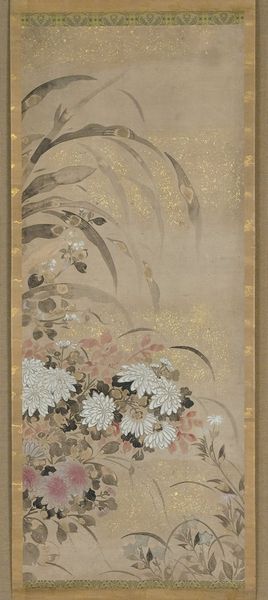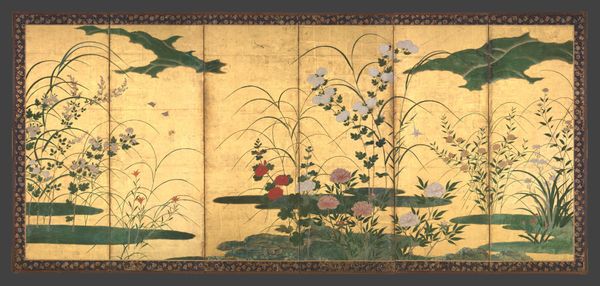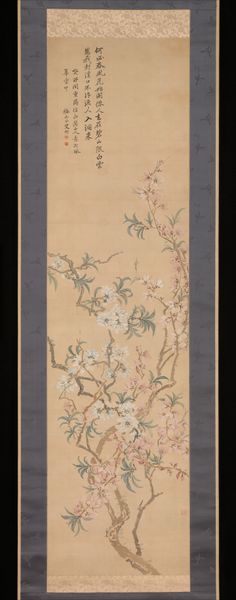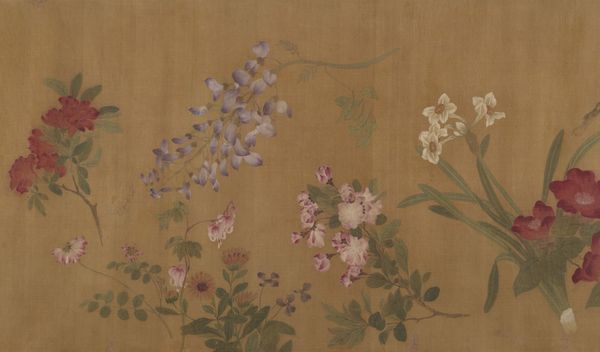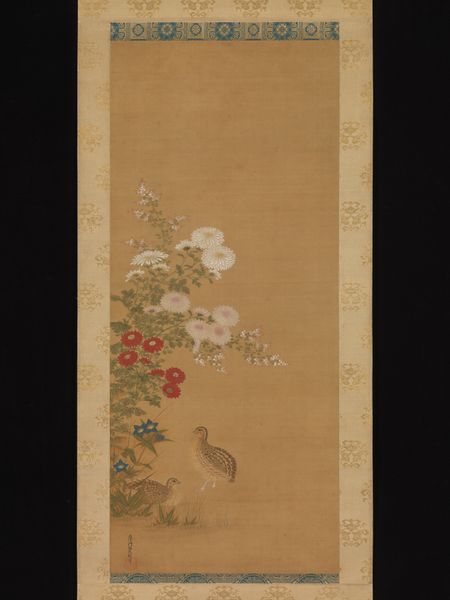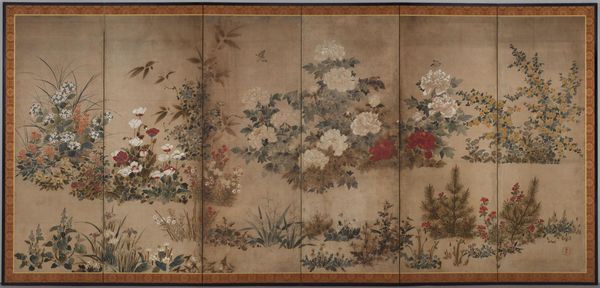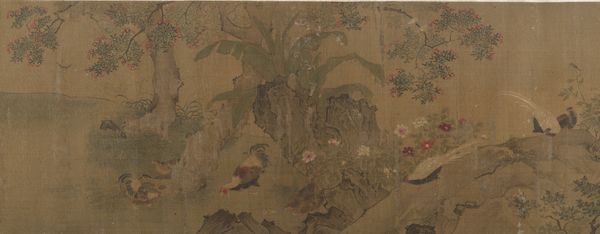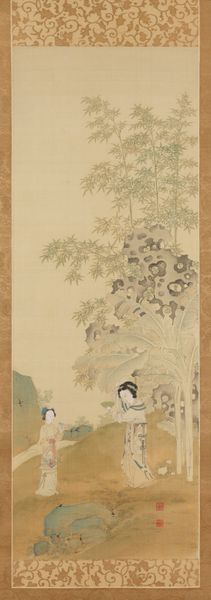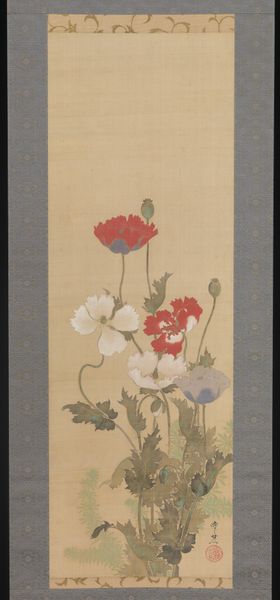![Flowers of Autumn [left of a pair of Flowers of Summer and Autumn] by Tawaraya Sōsetsu](/_next/image?url=https%3A%2F%2Fd2w8kbdekdi1gv.cloudfront.net%2FeyJidWNrZXQiOiAiYXJ0ZXJhLWltYWdlcy1idWNrZXQiLCAia2V5IjogImFydHdvcmtzLzRiOTRmODU0LWQ5MDMtNDg3NC04NGFlLTMyZWVjNmE1M2IzZC80Yjk0Zjg1NC1kOTAzLTQ4NzQtODRhZS0zMmVlYzZhNTNiM2RfZnVsbC5qcGciLCAiZWRpdHMiOiB7InJlc2l6ZSI6IHsid2lkdGgiOiAxOTIwLCAiaGVpZ2h0IjogMTkyMCwgImZpdCI6ICJpbnNpZGUifX19&w=3840&q=75)
Flowers of Autumn [left of a pair of Flowers of Summer and Autumn] c. 17th century
0:00
0:00
painting, watercolor
#
water colours
#
painting
#
asian-art
#
ukiyo-e
#
japan
#
watercolor
#
watercolor
Dimensions: 51 13/16 × 19 7/16 in. (131.6 × 49.37 cm) (image)84 1/2 × 21 1/16 in. (214.63 × 53.5 cm) (mount, without roller )
Copyright: Public Domain
Tawaraya Sōsetsu painted these 'Flowers of Autumn' with ink and color on paper, portraying a scene abundant with seasonal flora. Here, the bellflowers, or Kikyo, take center stage, their delicate forms rendered with a striking purity of color that echoes sentiments of ephemeral beauty. Consider the symbolic weight of flowers throughout history. In ancient Greece, we see floral motifs used in funerary wreaths, signifying cycles of life and death. Similarly, in Edo Japan, as depicted here, flowers were deeply intertwined with seasonal cycles and philosophical reflections on nature. Note how the Japanese morning glory, known as Asagao, is depicted. Unlike its Western counterpart, laden with Christian allusions to vanity, the Asagao embodies a quiet acceptance of transient beauty, a motif resonating with the deeper, subconscious appreciation of nature’s fleeting moments. Such imagery becomes a potent vehicle for cultural memory, a cyclical return to themes that engage us on a deeply personal level, subtly yet powerfully.
Comments
minneapolisinstituteofart about 2 years ago
⋮
Colorful wildflowers of summer and autumn abound in this pair of hanging scrolls by an early painter of the Rinpa school, a lineage of painters of the Edo period (1603–1868) that engaged with classical Japanese themes and designs to create a distinctively decorative style of painting. The right scroll is dominated by large white cockscomb, blue gentians and irises, and red azaleas. At left orange lilies, red magnolia, and white clematis bloom beneath the branch of a chestnut tree. Sōsetsu was a follower of Sōtatsu, the leader of the Tawaraya studio now seen as the progenitor of Rinpa-style painting. Sōsetsu also used his master’s large, round seal (read “I’nen”) that can be seen on the lower outside corners of each of the present scrolls.
Join the conversation
Join millions of artists and users on Artera today and experience the ultimate creative platform.
